I set off shortly before sunrise. The road was dirt until the edge of town, at which point it turned to sand. It was deep, and I had to push for quite a long way. I was sweating hard and the sun was barely over the horizon, I was glad I’d not started the afternoon before.

After about an hour or so the track improved and was then generally ridable. I rode on through the bush, seeing the occasional wild zebra. After a while I saw the reason for their presence, a watering hole.


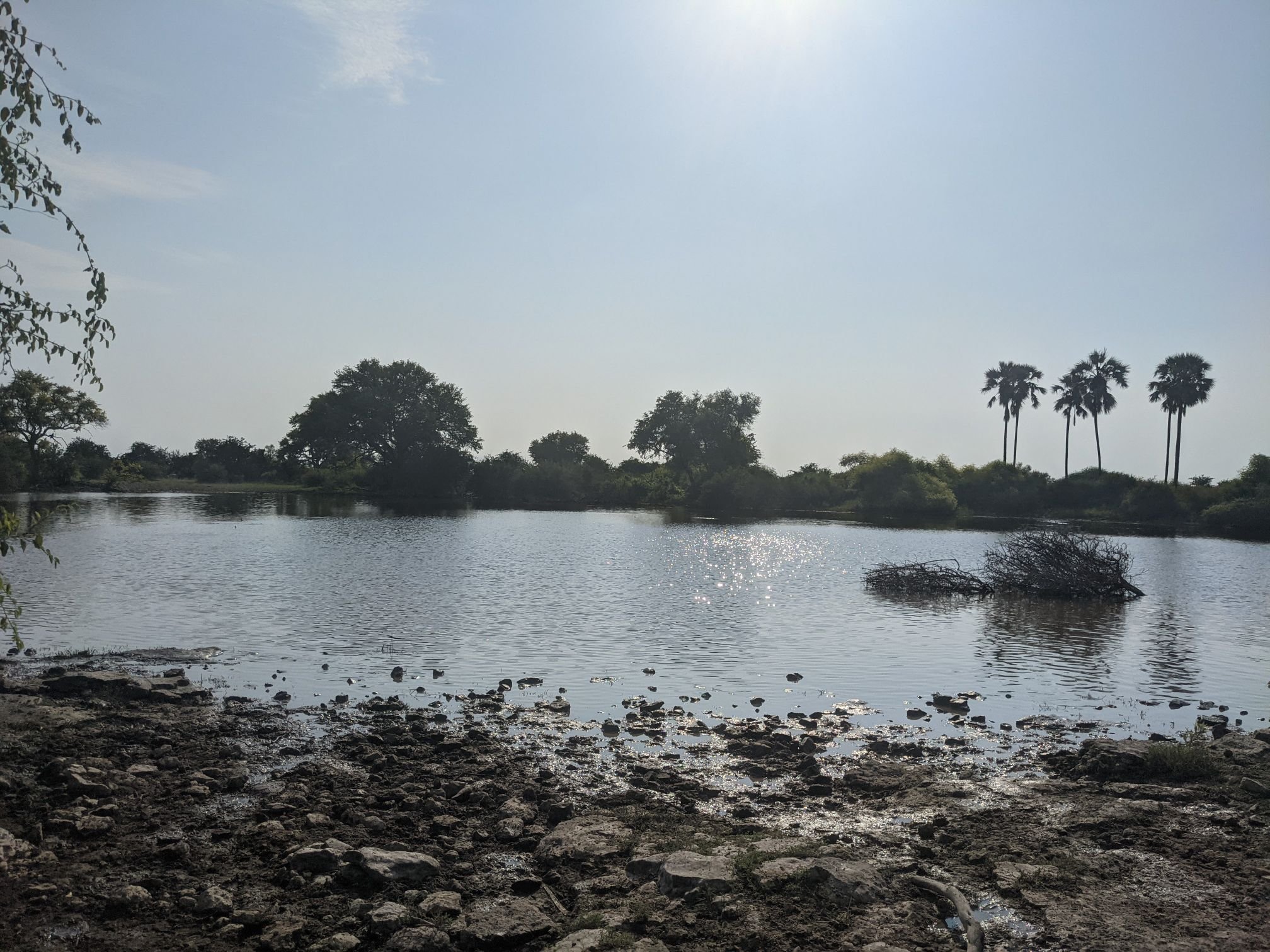
As I continued south, the landscape alternated between bush and open savannah. The number of zebras increased – at one point, there were herds ahead of me and to both sides, hundreds if not thousands of them.



I was concerned I would not be able to get around the zebra and that they would simply keep running away from me along the track. But eventually the entire herd crossed to one side of the track, so I moved to the other side and got past them.

After one last, smaller herd of zebra (15 or so) I rode across a big empty plain. There was a watering hole in the middle that I had to go around, but no animals there except a tortoise.

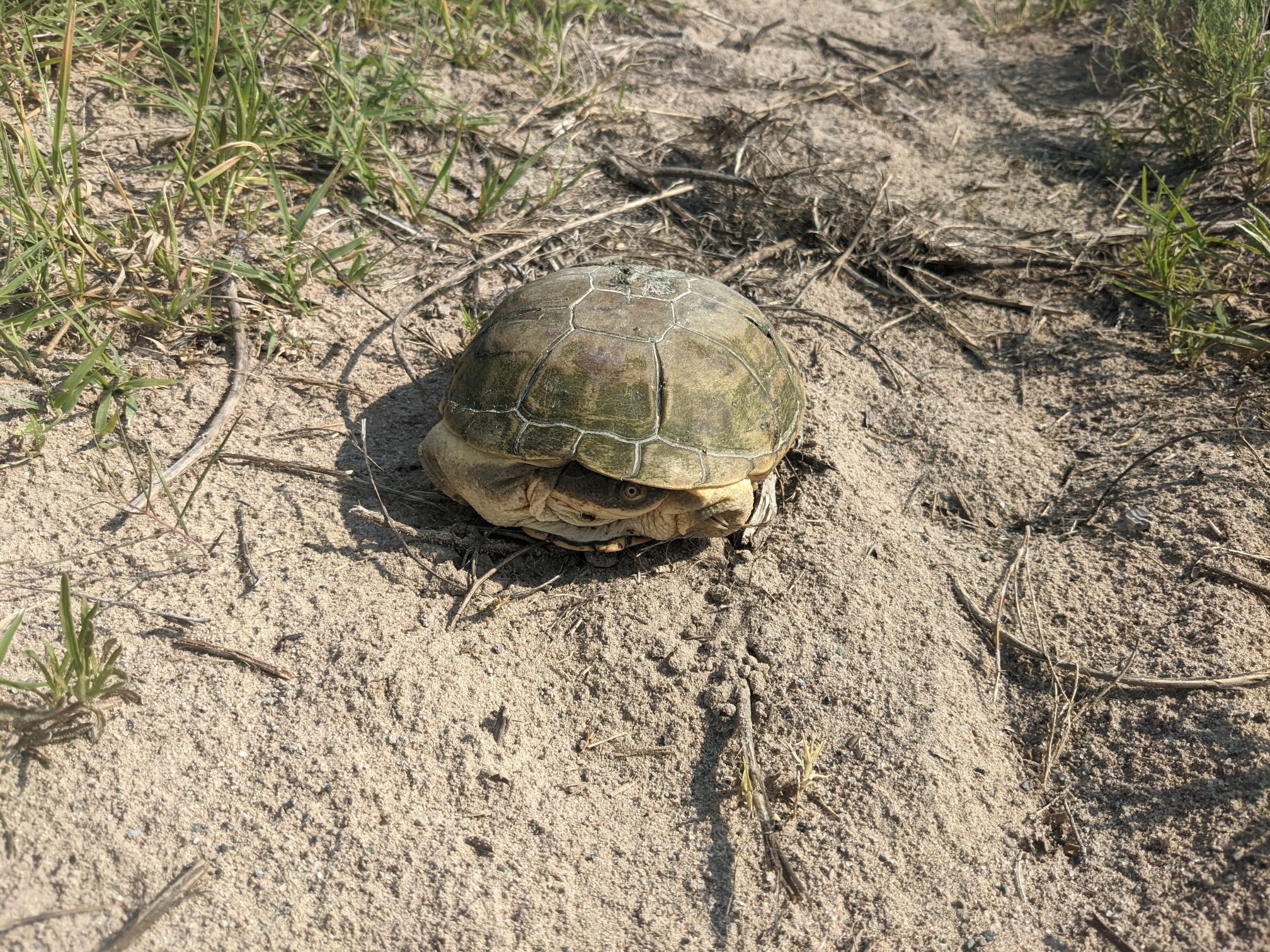
Though ridable after the first hour, the track was generally rough. It took about 4 hours of sand and gravel to reach my destination, the Ntwetwe pan. This is part of a large system of salt pans, about 20km wide here but bigger further east.

In the Salar de Uyuni, in Bolivia, the salt pans are rock solid salt, and easily ridable. Here, though… There was mud. For the first couple kilometres it was hard enough to be ridable, but then I reached a damper area.

The mud stuck to my wheels, and blocked their movement. Frequently I had to stop and clean them off before moving on, watched by distant wildebeest. I made my way to a grassy “island” in the pan and stopped to consider.
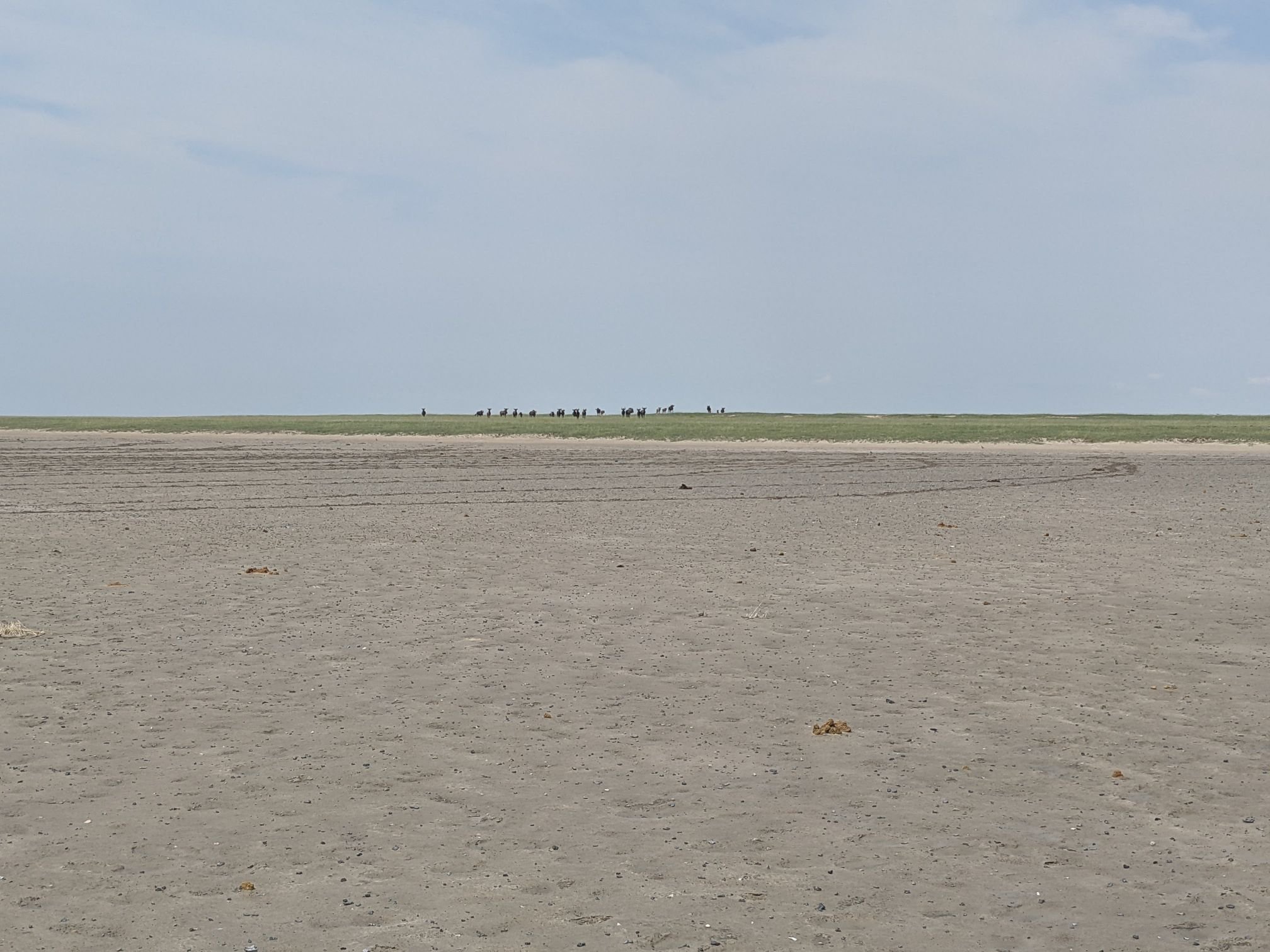

My main concern was running out of water. It had been a 40km ride to the pan, which was 20km across. There would then be 70km on the other side before I reached a town. I expected to be able to get water at some point on the other side, but I couldn’t be certain. There was no phone signal here, and with the state of the mud here there might not be anybody else around for weeks.
The land around the island was harder, and ridable, so I continued on to it’s southern edge. There, the ground continued to be better and for a few kilometres I was able to ride across this open, deserted landscape.


Then it got worse again. The going was excruciatingly slow, as I could only make it 50 metres at most before stopping to clean the bike. When I did continue on, I had to keep checking the direction. At one point I was surprised to see a track to my left – then I realised I had turned 90°.
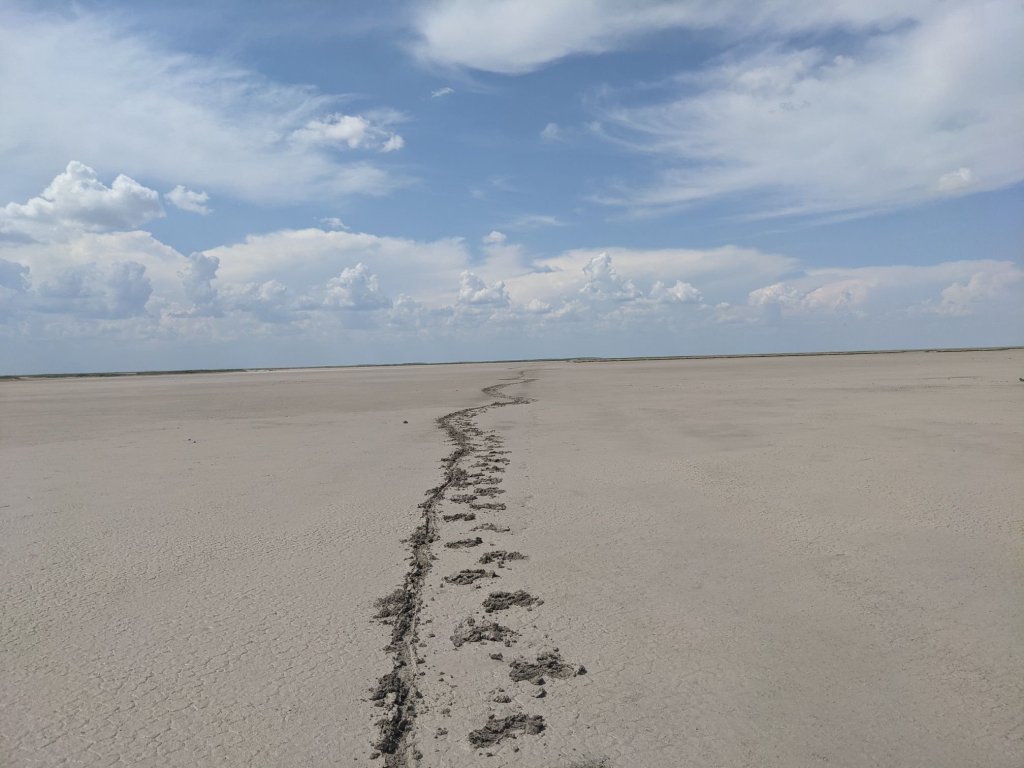
On my map there was an island marked at the midpoint of the pan. Slowly, so slowly, I made my way towards it. There were car tracks cutting across the grass, which had made deep ruts that were filled with water.
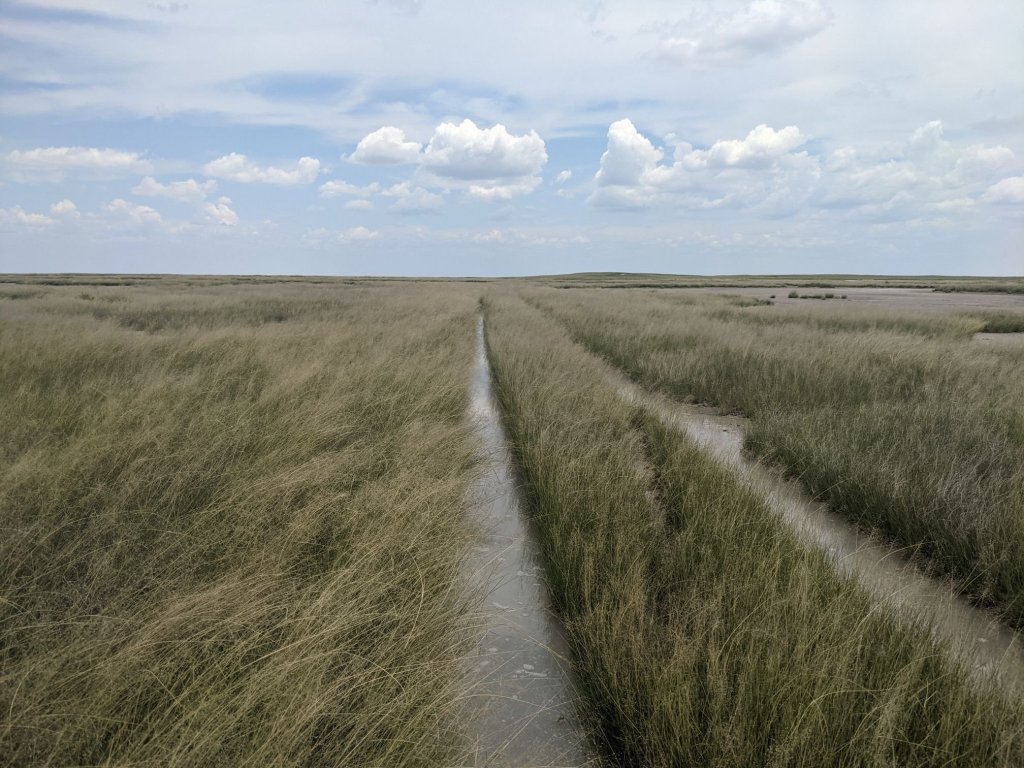
This was actually a lot easier. The water effectively cleaned my bike (to an extent), so the mud did not clog up, and I could maintain a reasonable walking pace as I pushed the bike through. Past the main island, there were smaller patches of grass, around which the ground was firmer, so I could cycle for a while.
Once the islands ended, I was able to keep cycling for a while, before it was back to mud. The mud made things different in several, compounding ways. It’s a high-resistance surface to push the bike through. It gives me less purchase; my feet slide backwards when I try to push the bike. It clogs up the space around the wheel, adding a lot more resistance. It also makes the bike heavier, as I realised when I tried to shake some mud off the bike by lifting it – and couldn’t. Because this was not just a little bit of mud stuck to the tyre.


My nose is for some reason the only bit of my skin that still needs suncream. My hands were never really clean enough to apply suncream, so I just covered my nose in a layer of mud. It worked. My lips also have a tendency to burn if I don’t use lip balm, so I tried to keep my mouth closed as much as possible. Since I was often bent over pushing the bike, my face was usually in the shade and it turned out OK.
At last I reached a point where the pan was totally flooded. For a couple kilometres I was able to make a decent pace as I pushed the bike through the ankle-deep water. The warm water on my legs felt nice, as they were somewhat scratched from walking through the long grass.
When this ended, it was back to slow progress through mud. Ever more frequently the bike became immovable until I cleaned it off.
At one stage it got to the point where I could not move 5 steps without the bike becoming totally jammed. And these aren’t big steps: we’re talking about stopping every 2-3 metres. I gave up on turning the wheels and started walking backwards, dragging the bike sideways.
This was incredibly slow and I did have to wonder at what point I would need to drop the bike and start walking to try to find water. Finally though, I reached another section where I could ride. I cycled across the last 2-3 km, with grassland ahead of me and trees visible in the distance beyond them. It had taken about 5 hours to cover the last 15 km.

At the end of the pan was a fence with a gate, the site of a foot and mouth checkpoint. The checkpoint was empty but I stopped at the gate. Literally. After hours of being clogged with gritty mud, there was no braking material left on my brake pads. My method of stopping was to simply ride into the gate. It worked; maybe brakes aren’t necessary? I opened the gate and continued on.


As north of the pan, I rode through alternating bushland and grassy plains. At one point, riding along a track through long grass, I saw two men on horseback coming the other way. They must have been quite surprised to see a Mzungu with a bike out here, but we just exchanged hellos and continued on. It was a big relief to see people, the risk of severe dehydration now seemed a lot lower as I expected to be able to find water. I had about a litre left of the eleven I’d set off with that morning.
Continuing on, I saw the occasional horse and donkey, and quite a lot of cows. After a while I reached their watering hole. I considered getting water there but it had quite a lot of birds swimming there, and lots of bird faeces floating around. Even after filtering that wouldn’t be great.
Shortly afterwards I saw a man watching over some livestock. I asked him about water, and he led me back to the watering hole. There was a small pool, separated from the rest and covered over, which it seemed locals use for drinking. He had some himself, and filled up a couple bottles for me. A green-brown colour with lots of stuff floating in it, this was water I would definitely filter before drinking!
I rode on a little while further, then stopped. I made my way a short distance from the track and set up camp, glad to have enough water that I wouldn’t be thirsty overnight.
I was late starting the next morning. I spent a while cleaning the worst of the dirt off the bike, focusing particularly on the brakes and the drivetrain. I replaced the brake pads and lubed the chain; my bike now seemed to be working mostly normally.
I still had some way to go before getting back to a road. The tracks I was following were mostly sandy, and often corrugated. It made for slow progress, but at least I could ride.

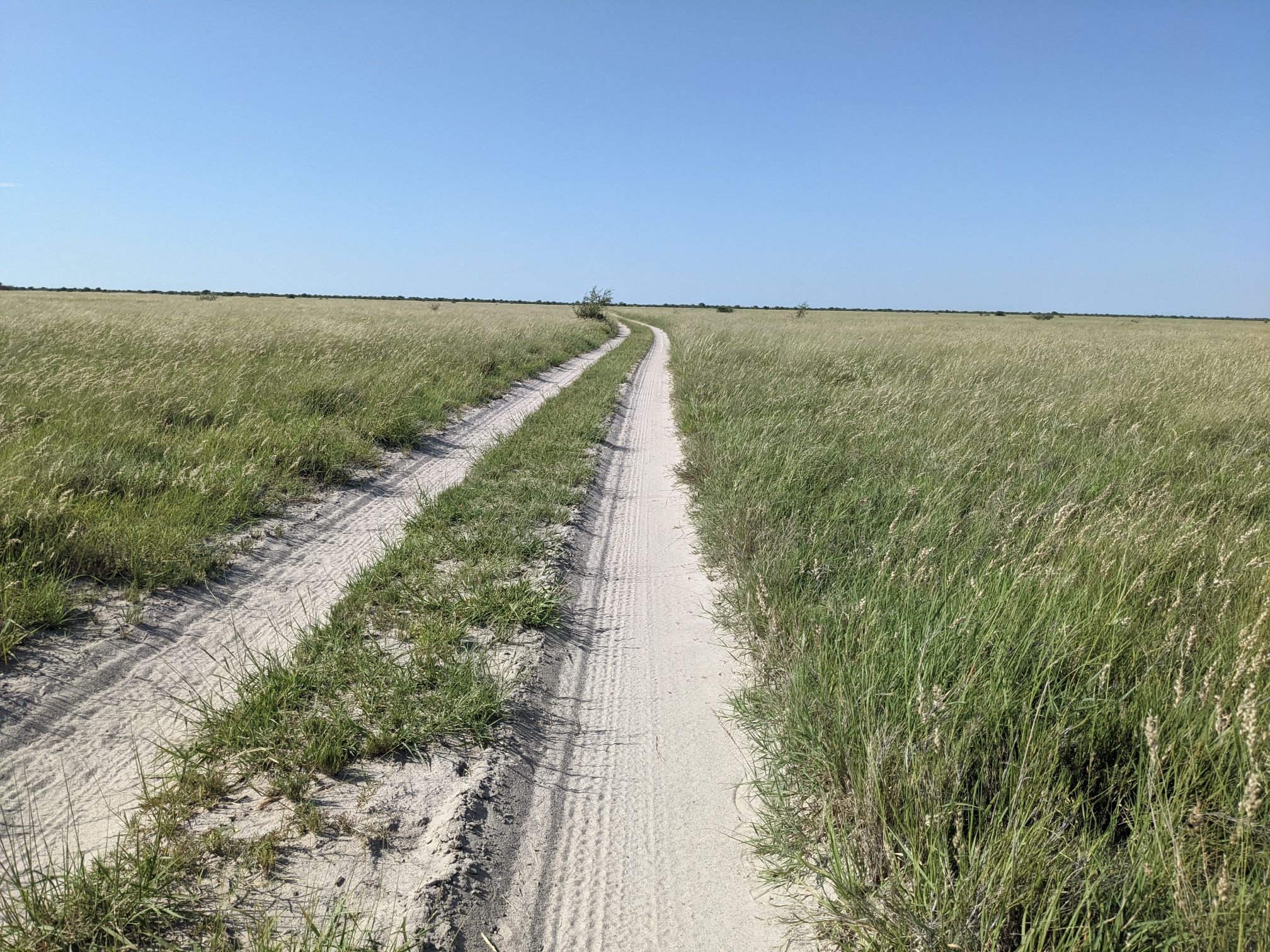
I reached a dry river bed. It was marked as a rather wide river on my map; it was a shame I couldn’t fill up my water there but at least there were no hippos or crocodiles to worry about.
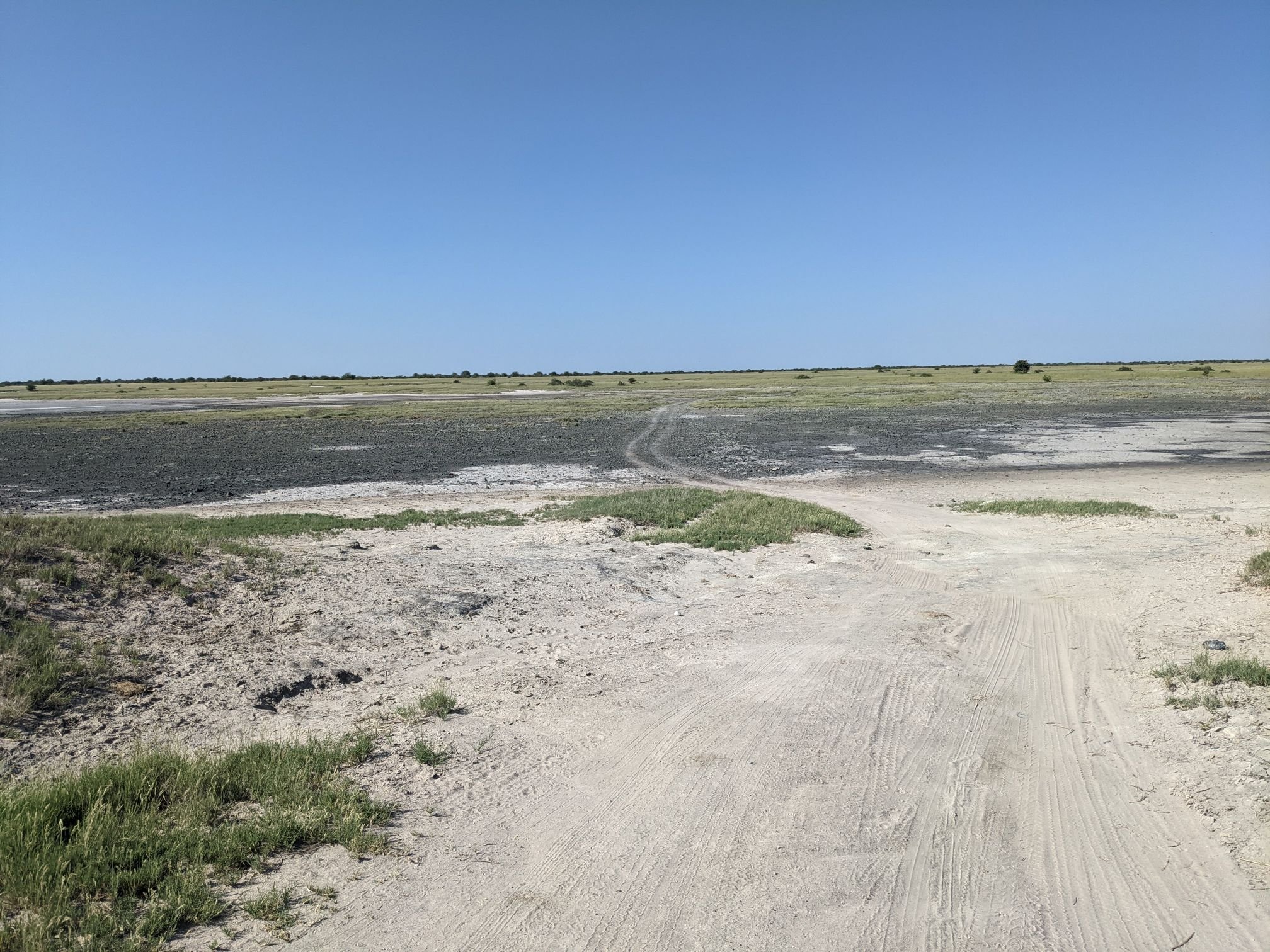
Continuing on, I came to a junction. A road leading off to the side had a sign for a vet checkpoint, and there were some buildings nearby. There were a couple of men there who let me stock up from their water tank. Having gathered 4L of clean drinking water with only about 30km to go, dehydration was no longer a significant concern.
Slowly progressing through the gravel and sand, I reached a high fence and a locked gate. This, I later read, was the Orapa diamond mine. By area it’s the largest diamond mine in the world. A track led around the edge of the fence so I followed that, fervently hoping it would not end abruptly.

This was often quite deep sand, and I spent a lot of time moving around trying to find the easiest path through. After about 15km this brought me back to the “main” track, the other side of the mine, and I slowly rode the remaining 10km to the paved road.
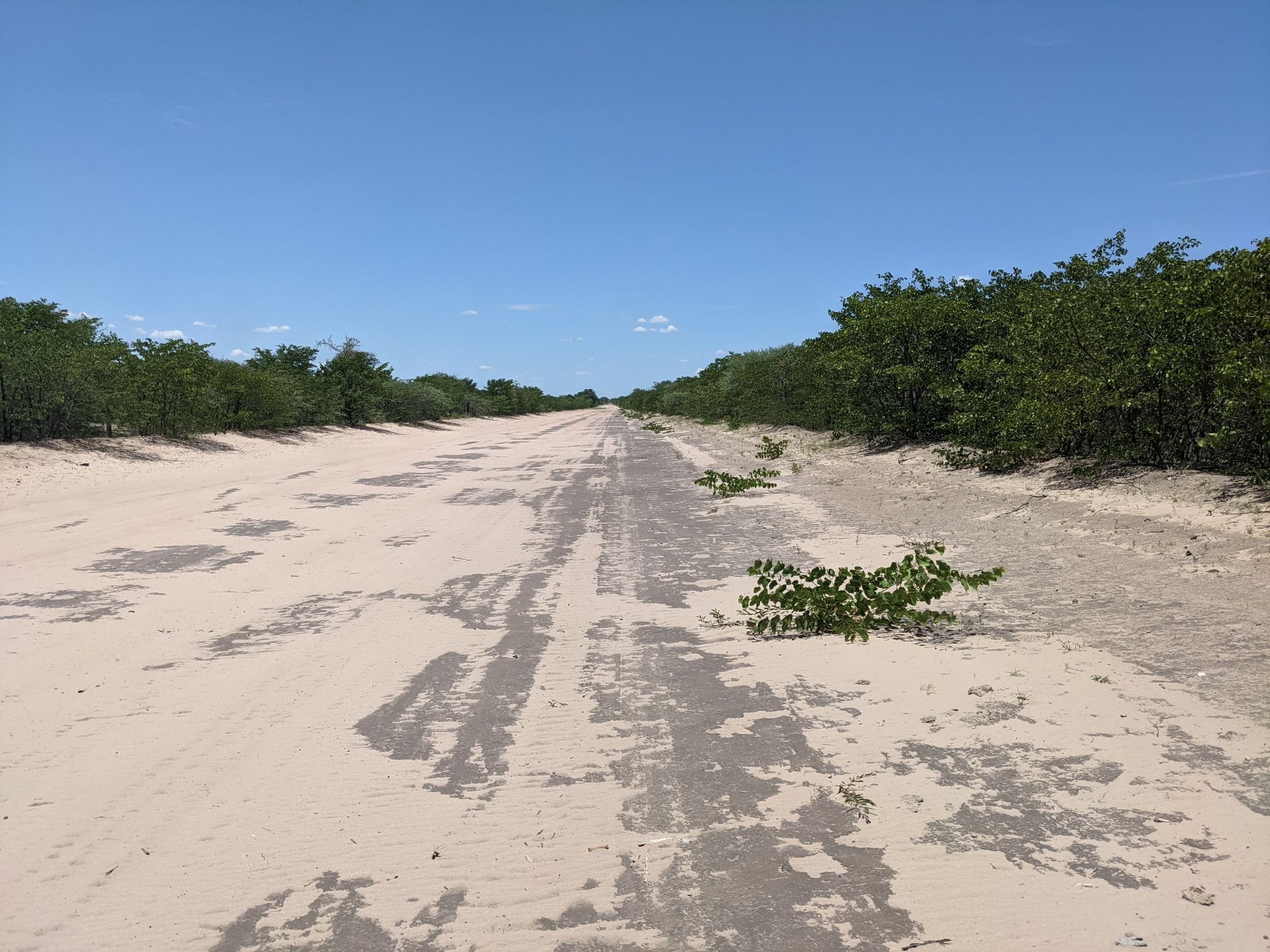

It was now about midday and there was a campsite about a kilometre away. I stopped to try and fill up my water and get a cold drink. They turned out to have a restaurant, and I decided I’d earned a pizza, so I stopped for a break.
Just as I was leaving, one of the campsite employees told me they had free showers, pointing to them. You know you’re dirty when someone comes up to you in a restaurant to offer you a shower! Well, I was covered in mud.
I thanked him and headed over for a shower, washing my clothes at the same time – they’d dry quickly in the hot weather here. A few steps closer to presentable, I set off cycling again
I’d joined the road near the town of Orapa, but I couldn’t cycle through there. The town is owned by DeBeers, the diamond monopoly. It houses the mine workers and has an airport, a hospital and several schools. Apparently it’s the only such “closed town” in Botswana, where people need a permit to enter.
Luckily I found this information on iOverlander and did not waste time trying, instead riding around it. I was now cycling into a headwind so I still wasn’t exactly going fast. After a couple of hours I reached the town of Lelthakane. There was a Choppies about 1.5km from the main road, so I went over there to get some food and to replace the bottles that had been holding the highly questionable water.
After a break there, I rode on. There were fences on both sides of the road, presumably to keep cattle on the other side. However, whenever there were tracks leading off the road there was no gate or cattle grid, just a gap in the fence. So there were still lots of cows on the road.
Shortly before sunset I went through one of these gaps in the fence and found a spot to set up the tent.


Feb 11: 87 km
Feb 12: 110 km
Ugg! I hate mud like that, and I’ve never experienced it to anywhere near that extreme! Glad you made it across. Interesting that your track shows you spending the day crossing water!
LikeLike
Maybe that’s what all water on maps is like! Perhaps I really could cross the Atlantic by bike…
LikeLike
I felt exhausted just reading about that mud. I’d have been really worried about sinking up to my neck. Well done for making it through Sam!
LikeLike
Thanks! Although it was very sticky the mud was also very shallow, and just a few centimetres down there was a hard surface, so that wasn’t a concern thankfully
LikeLike
Sounds a bit masochistic what you did – good that you got through! I had once mud on the brakes which got hard like concrete.. just looking at your pics makes me sweat.
LikeLike
Haha, it was certainly pushing the boundary of type 2 fun!
LikeLike